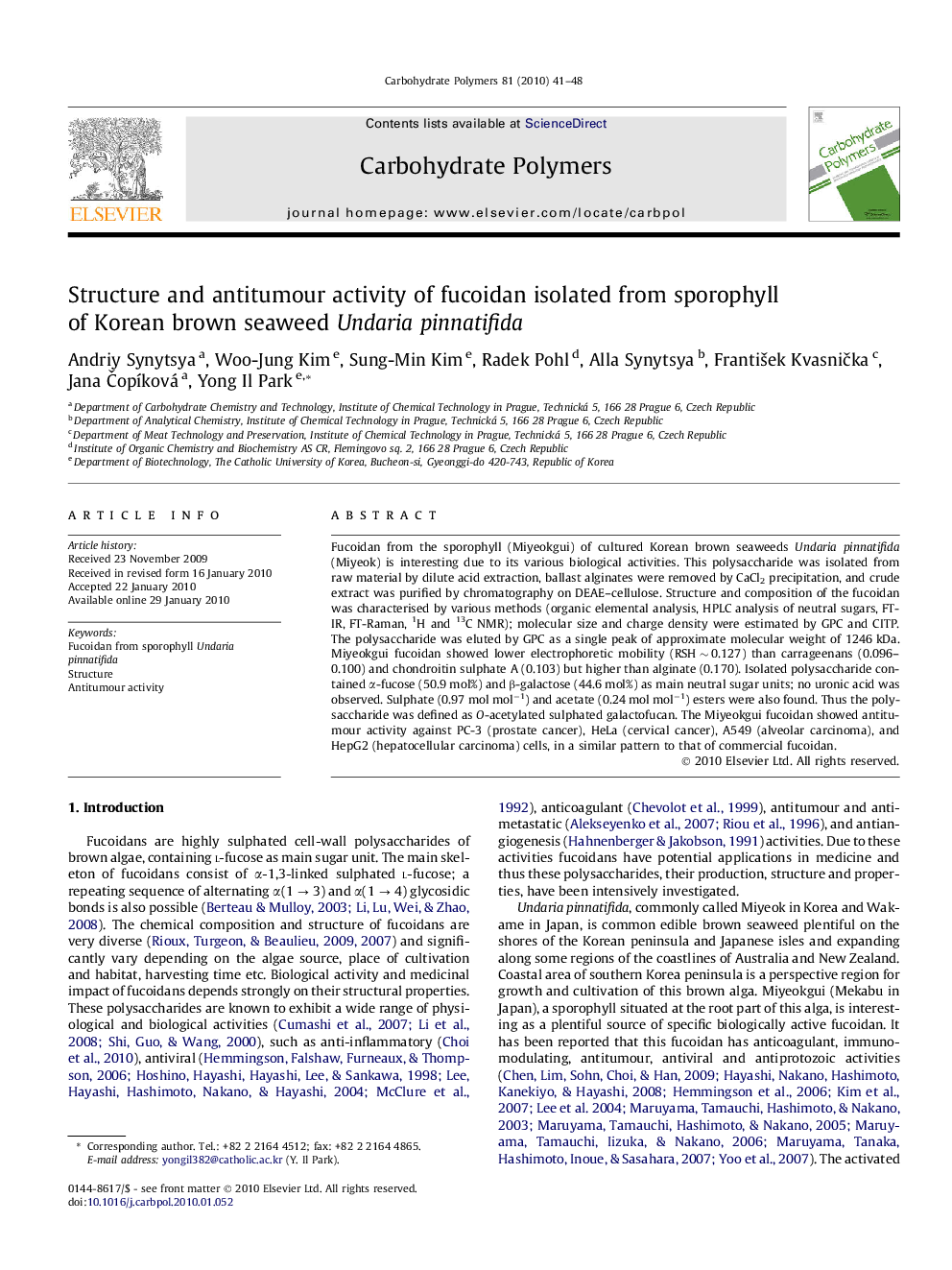| Article ID | Journal | Published Year | Pages | File Type |
|---|---|---|---|---|
| 1385580 | Carbohydrate Polymers | 2010 | 8 Pages |
Fucoidan from the sporophyll (Miyeokgui) of cultured Korean brown seaweeds Undaria pinnatifida (Miyeok) is interesting due to its various biological activities. This polysaccharide was isolated from raw material by dilute acid extraction, ballast alginates were removed by CaCl2 precipitation, and crude extract was purified by chromatography on DEAE–cellulose. Structure and composition of the fucoidan was characterised by various methods (organic elemental analysis, HPLC analysis of neutral sugars, FT-IR, FT-Raman, 1H and 13C NMR); molecular size and charge density were estimated by GPC and CITP. The polysaccharide was eluted by GPC as a single peak of approximate molecular weight of 1246 kDa. Miyeokgui fucoidan showed lower electrophoretic mobility (RSH ∼ 0.127) than carrageenans (0.096–0.100) and chondroitin sulphate A (0.103) but higher than alginate (0.170). Isolated polysaccharide contained α-fucose (50.9 mol%) and β-galactose (44.6 mol%) as main neutral sugar units; no uronic acid was observed. Sulphate (0.97 mol mol−1) and acetate (0.24 mol mol−1) esters were also found. Thus the polysaccharide was defined as O-acetylated sulphated galactofucan. The Miyeokgui fucoidan showed antitumour activity against PC-3 (prostate cancer), HeLa (cervical cancer), A549 (alveolar carcinoma), and HepG2 (hepatocellular carcinoma) cells, in a similar pattern to that of commercial fucoidan.
